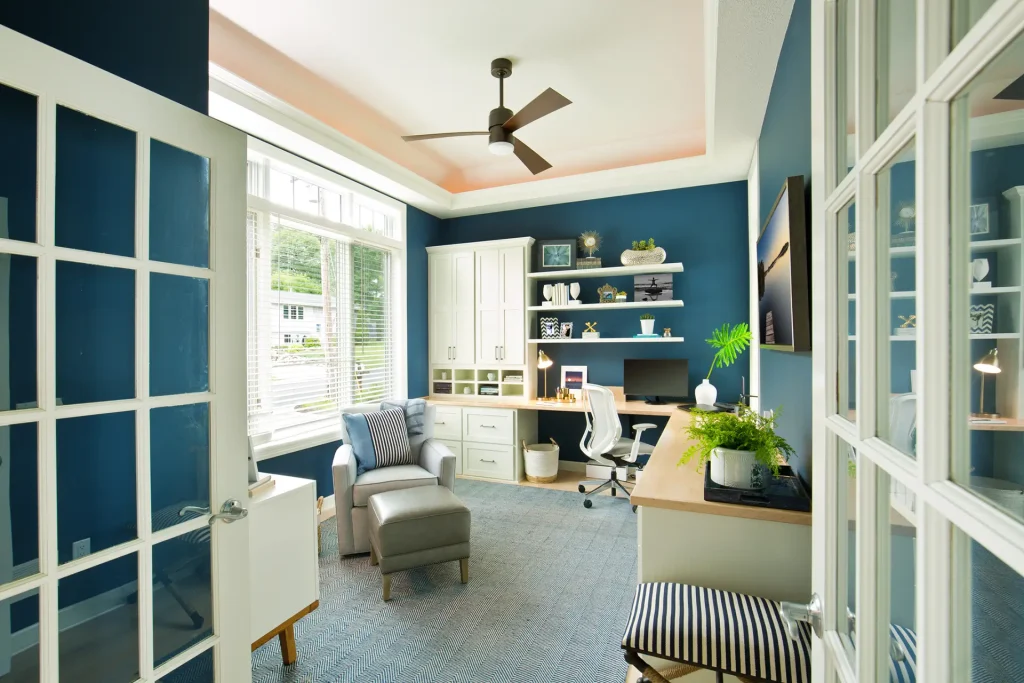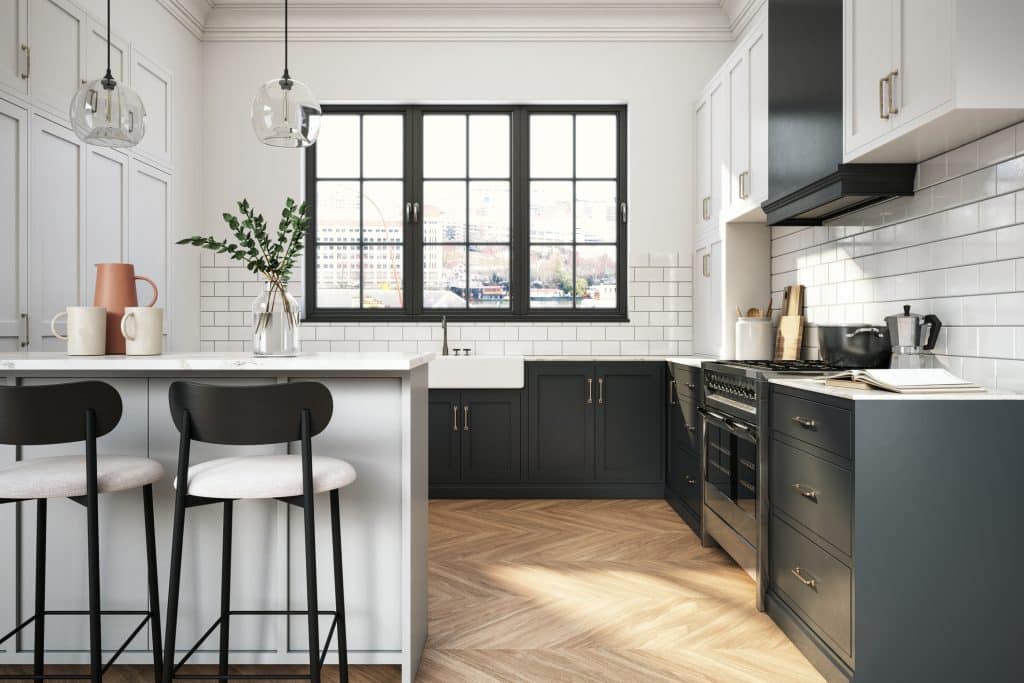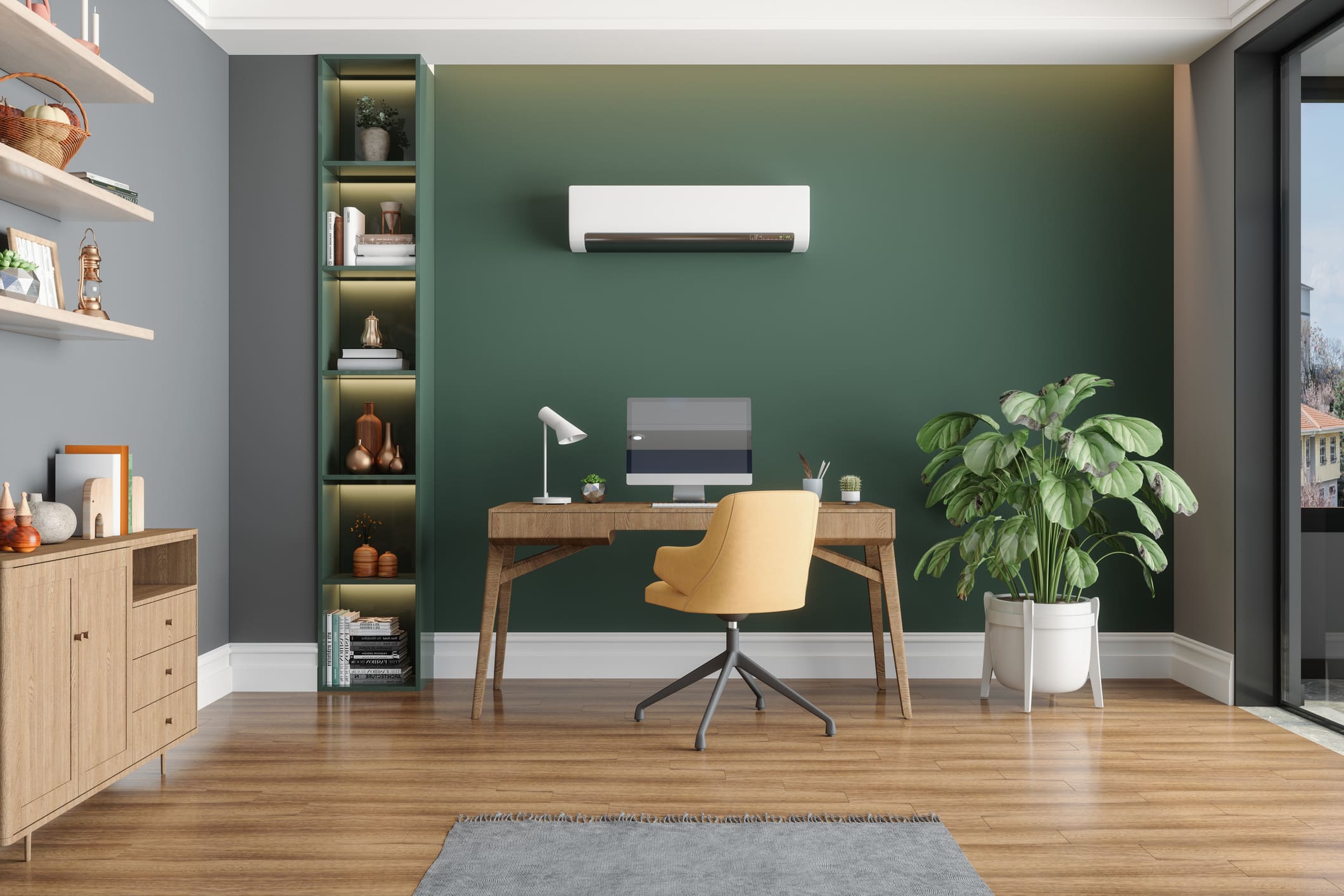You’ve scheduled your interior house painting project, and now you’re wondering: should you pack a bag and book a hotel, or can I stay home during interior painting? It’s a question that keeps many Bearspaw homeowners up at night, especially when you’re weighing the costs, logistics, and whether those paint fumes are actually harmful to your family.
Here’s the truth: most homeowners can safely stay home during their painting project—but only if the right precautions are in place.
Key Takeaways
-
Modern low-VOC and zero-VOC paints significantly reduce harmful fumes and odors
-
Proper ventilation is critical for interior painting fumes safety, regardless of paint type
-
You can typically stay home during interior painting if painters work room-by-room
-
Children, pets, pregnant women, and those with respiratory conditions may need extra precautions
-
Professional painters should provide clear guidance on low VOC paint drying time and air quality

The Real Story Behind Paint Fumes and Your Health
Let’s address the elephant in the room: is interior paint safe to breathe?
Traditional oil-based paints contain volatile organic compounds (VOCs) that release gases into your home’s air. According to Environment and Climate Change Canada, VOCs can cause eye, nose, and throat irritation, headaches, and in extreme cases, damage to your liver, kidneys, and central nervous system.
But here’s what’s changed: paint technology has evolved dramatically. Most professional interior painting companies in Bearspaw now use low-VOC or zero-VOC water-based paints as their standard option. These paints contain fewer than 50 grams of VOCs per liter (low-VOC) or less than 5 grams per liter (zero-VOC), compared to traditional paints that can contain 200+ grams per liter.
The difference? You’re breathing in significantly fewer harmful chemicals, which means staying home becomes a viable option for most families.
When You Can Comfortably Stay Home During Interior Painting
Here’s the good news: if your painting contractor follows proper protocols, you don’t need to leave during interior painting in most situations.
You can safely remain home if:
-
Your painter uses low-VOC or zero-VOC paints
-
The work is contained to specific rooms while others remain livable
-
Windows and ventilation systems are used appropriately
-
Your family doesn't include high-risk individuals (more on this below)
-
The painter schedules work during times when you can access other areas of your home
Professional painters in Bearspaw typically work room-by-room, allowing you to maintain normal routines in unaffected areas. Your master bedroom can become your temporary headquarters while the living room gets its fresh coat.
One critical factor: interior painting ventilation tips make all the difference. Your painter should open windows, use fans to create cross-ventilation, and ensure fresh air circulates throughout the work area. This dramatically reduces odor concentration and speeds up the low VOC paint drying time.
When You Should Consider Leaving (Even Temporarily)
Some situations call for a more cautious approach. You should plan to stay elsewhere if:
-
01
Your home includes vulnerable individuals.
List description hereInfants, young children, pregnant women, elderly family members, and anyone with asthma, allergies, or respiratory conditions are more sensitive to paint fumes—even low-VOC varieties. If you're asking "can I stay home during interior painting" with a newborn in the house, the safest answer is usually no, at least for the first 24-48 hours.
-
02
The project involves oil-based paints or primers.
Some surfaces require oil-based products for durability or adhesion. These contain significantly higher VOC levels and produce stronger odors that linger longer. Your painter should inform you upfront if oil-based products are necessary.
-
03
You're painting multiple rooms simultaneously.
When contractors tackle your entire home at once, you'll have nowhere to escape the smell. Even with excellent ventilation, the cumulative effect of paint fumes throughout your house can be overwhelming.
-
04
Your home has poor ventilation.
Older Bearspaw homes or those with limited windows may struggle to achieve adequate air circulation. If you can't create strong cross-ventilation, the risk increases.
-
05
You have pets who can't be contained.
Curious cats and energetic dogs can walk through wet paint, track it through your home, or inhale concentrated fumes in freshly painted rooms. Sometimes the safest option is boarding your pets for a day or two, rather than risking their health or your new paint job.

How Long Before Your Home Is Safe After Painting?
This is where low VOC paint drying time becomes important—but “dry to the touch” and “safe to breathe” are two different timelines.
-
Surface dry time: Most water-based paints dry to the touch within 1-2 hours under ideal conditions (moderate temperature, low humidity, good airflow).
-
Off-gassing period: Even after paint feels dry, it continues releasing VOCs. Low-VOC paints typically off-gas for 24-48 hours, while zero-VOC paints may reach safe levels within 8-12 hours with proper ventilation.
-
Full cure time: Paint reaches its final hardness and stops off-gassing completely after 2-4 weeks, though it's safe to occupy the space long before this.
-
For practical purposes, most Bearspaw homeowners can return to painted rooms after 24 hours if using low-VOC paints with proper ventilation. Those with sensitivities may want to wait 48-72 hours.
Interior Painting Fumes Safety: Practical Steps You Can Take
Whether you stay home during interior painting or leave temporarily, these strategies minimize risk and maximize comfort:
Before the project starts:
-
Discuss paint options with your contractor and request low-VOC or zero-VOC products
-
Remove or cover belongings in the work area
-
Identify which rooms you'll use as "safe zones" during the project
-
Plan meals that don't require cooking if your kitchen is being painted
During the painting:
-
Keep windows open in painted rooms, weather permitting (yes, even in Alberta winters—crack them slightly)
-
Use box fans to push fumes toward open windows
-
Run your HVAC system's fan (but close vents to painted rooms if possible)
-
Keep painted areas off-limits to children and pets
-
Consider staying with family or friends overnight if anyone has respiratory sensitivities
After the painting:
-
Continue ventilating for at least 48 hours
-
Use air purifiers with activated carbon filters to capture remaining VOCs
-
Avoid sleeping in freshly painted rooms for at least 24 hours
-
Wash any fabrics that were exposed to paint fumes

What Professional Painters Should Tell You (And Do)
-
Explain whether you need to leave during interior painting based on your specific situation
-
Provide Material Safety Data Sheets (MSDS) for all products used
-
Use low-VOC paints as standard practice unless you request otherwise
-
Implement proper ventilation protocols without you having to ask
-
Schedule work to minimize disruption to your household
-
Give you realistic timelines for when rooms will be safe to occupy
If your painter can’t clearly answer “is interior paint safe to breathe” or seems dismissive about interior painting fumes safety, that’s a red flag.
The Bottom Line for Bearspaw Homeowners
Can I stay home during interior painting? Yes, in most cases—especially when you work with professionals who prioritize your safety and comfort.
The key factors are paint type, ventilation, project scope, and your household’s specific needs. Modern low-VOC paints have made staying home during painting safer than ever, but you still need to take precautions seriously.
Don’t let fear of fumes keep you from refreshing your home’s interior. With the right approach, you can maintain your daily routine while your walls get their makeover.
Ready to Transform Your Bearspaw Home Without the Hassle?
At Neighbourhood Painters, we understand that your home is more than just walls that need painting—it’s where your family lives, breathes, and creates memories. That’s why we use premium low-VOC paints, follow strict ventilation protocols, and give you honest guidance about whether you can stay home during your project.
We’ll never pressure you to leave if you don’t need to, and we’ll never downplay safety concerns if you should.
Ready to discuss your interior house painting project? Call us at (403) 978-2257 to schedule your free consultation. We’ll walk through your home, answer all your questions about paint safety, and create a plan that works for your family’s schedule and needs.

